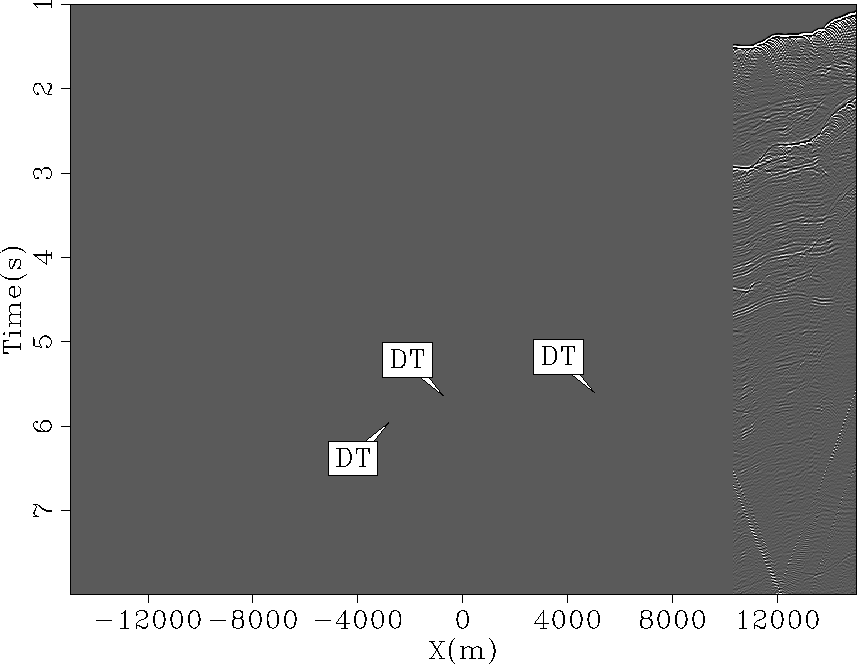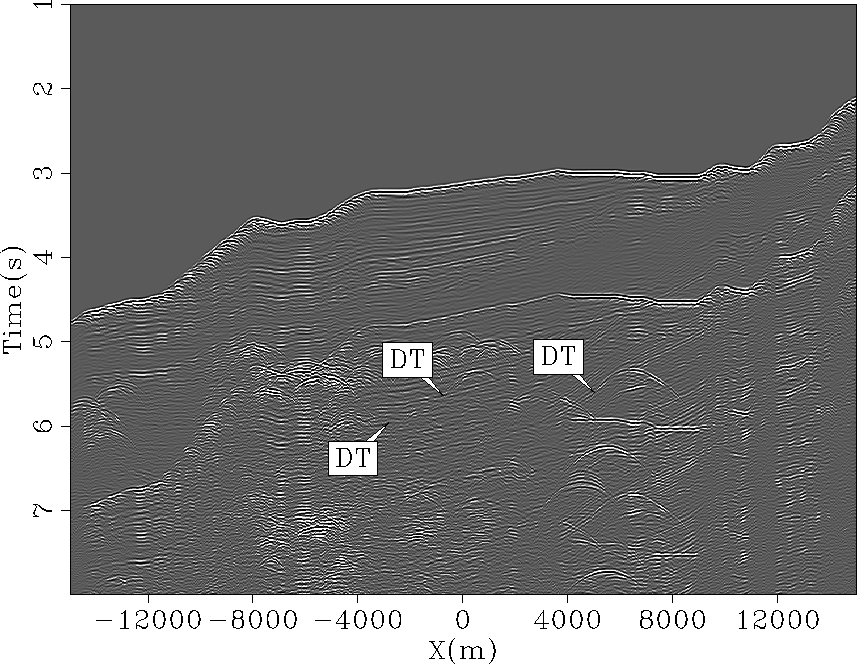




Next: Signal/noise separation results
Up: Subtraction of multiples
Previous: Pattern recognition
In the shot domain, for one frequency, the multiple model is given by
the spatial non-stationary convolution of shot gathers
Dragoset and Jericevic (1998); Verschuur et al. (1992).
The synthetic model has an offset spacing of 12.5 m
and a shot separation of 50 m. To make the multiple prediction work,
the offset axis is sampled down to 50 m. Figure 1 shows
one constant offset section from -15,000 m to +15,000 m.
This section of the dataset is particularly interesting because
of the diffractions visible throughout. Because no velocity model
or sedimentary section is available, a possible interpretation of
these diffractions is the presence of salt bodies with a rugose top
(similar to what we see with the Sigsbee2B dataset).
The multiple model is shown in Figure 2 for
the same offset. DT points to diffraction tails
where the model is not properly rendering the multiples in the data.
Besides these few imperfections in the model, the model looks very
faithful to the actual multiples. The pattern recognition technique
and the adaptive subtraction are compared in the following section.
data
Figure 1 Constant offset section (h=500 m) of
the data with multiples. DTs point to the tails of diffracted multiples.
 mult
mult
Figure 2 Constant offset section (h=550 m) of the
estimated multiples. The multiples are accurately modeled except for
the diffracted multiples, shown as DT, for which the limited range of
offsets and number of shots hamper any attempt at modeling the diffraction tails.






Next: Signal/noise separation results
Up: Subtraction of multiples
Previous: Pattern recognition
Stanford Exploration Project
5/23/2004


